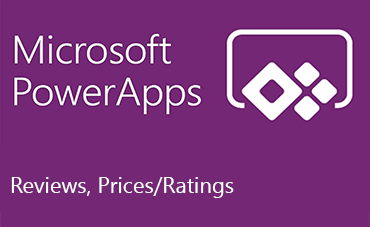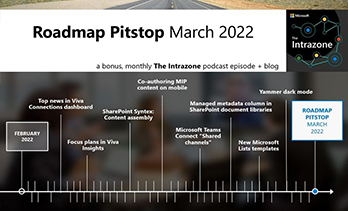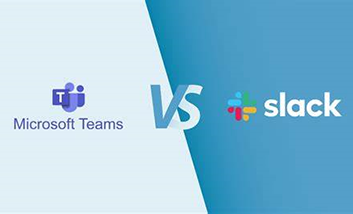HR
Did you know that one of the most popular uses of SharePoint is for HR management? To manage employee databases, store HR records, automate onboarding, carry out performance reviews, and keep track of employee training, many businesses have opted for SharePoint-based solutions and our REMO Digital Portal. What makes SharePoint so effective for HR requirements, then?
Employees, managers, and HR specialists working together
HRM software is being used throughout the entire firm, not just the HR department. Self-service, collaborative portals like REMO allow managers and employees to upload data such as personal information while also providing them with access to necessary information such as corporate policies. That frees up a ton of HR departments' time for crucial tasks.
Recruiting and Onboarding New Employees
The HR team may easily move through many employee applications thanks to SharePoint portals. The HR manager may locate the relevant resume by conducting a search in the database rather than reading through hundreds of resumes in black and white. By evaluating the centrally integrated checklists, HR management can keep track of duties that have been accomplished. For instance, several HR officers were required to interview numerous IT specialists and choose one; they could determine whether the task was accomplished by checking the checklist. The HR team and new hires can keep track of the onboarding process thanks to real-time dashboards. Reports can be generated and data on applicant interviews can be collected using the SharePoint human resources management system. Additionally, it can produce reminders and notifications, welcome and farewell emails, automated emails to inform candidates of rejection, and invites to interviews.
Users of SharePoint can build a sizable knowledge base that contains all the data required for new hires, such as the company's mission and guidelines, employee handbook, job duties, benefits, and e-forms, among other things.
Worker Evaluation and Management
SharePoint HR portals can be used by HR professionals to manage employee-related tasks and content. The HR staff finds it simple to handle documents since they can keep track of changes and monitor the revision history of contracts, job descriptions, and employee handbooks. Data encryption enables businesses to safeguard critical employee data, manage user access, limit document downloads, etc. SharePoint is also capable of producing alerts against unauthorized access to employee data. Through their profiles, the HR department can easily contact the employees. They can also keep track of and authorize wage adjustments, monitor working hours and attendance, record leaves of absence, arrange shifts, enroll students in courses, and more. The HR team may easily assess employee performance via HR portals; they can report on task completion, review performance, and analyze training outcomes. After training, they can also administer a test to evaluate the knowledge and abilities of the employees and give them their opinion. Surveys, analyses, and self-assessment questionnaires should be conducted to gauge employee happiness. Using HR portals, HR management can respond to requests from employees. They can approve and monitor requests for time off, track bonuses and benefits, monitor changes in employment status, monitor training and development progress, and more.
Maintain a record of the rules and procedures
The HR team is responsible for ensuring that the corporate policy conforms with all applicable local, state, and federal labor regulations. They must also ensure that the staff adheres to corporate policies. Regulations can be linked by HR management to centrally located policies and procedures. The dashboard can be used to monitor the status of the policy, active and expired certificates, and other information. Employees can simply confirm that they have followed instructions, policies, or rules. When rules or certificates are due to expire, the HR staff can schedule notifications to evaluate and update them. The integration of audio, video, and graphic training resources into the SharePoint HR site enables HR management to conduct knowledge assessments and schedule training for policy compliance.
Amazing storage for HR content and employee papers
SharePoint is a wonderful place to store your policies, procedures, employee documentation, and other HR content because of its built-in document management tools.
Adapting personalization to user role
Delivering the information that people require for their roles is crucial. Different information and characteristics are required by employees, managers, and recruiters. Solutions for SharePoint make that simple to do.
Adaptation to your requirements
HR experts have individual objectives because every business is different. Instead of compromising your aims to fit a system, adapt the system to meet your needs. REMO is a SharePoint solution that can be fully customized to match your needs.
Microsoft Office is tightly integrated
When your intranet can be connected with MS Office , it's a huge advantage because Microsoft Office products like Outlook and Word are so widely used. Imagine that every interview, absence, and training session was immediately added to the Outlook calendar. This is only one example of Office integration.
Organizer-based security
Security is a top priority for private HR information! You would need to configure your permissions based on a person's position within an organizational structure in addition to the user group they belong to.
Everywhere accessible portal
You may have a portal using SharePoint that is accessible from any location and device, including your home tablet and mobile phone.
In today's fiercely competitive corporate environment, automated and intelligent solutions have become essential. Your HR team's operations can be greatly enhanced by SharePoint and its portals Remo , which will enable them to do their best work for your company.
Administration
The management and support of the SharePoint platform for businesses is the responsibility of SharePoint Administrators. In addition to managing space, monitoring bandwidth, deploying customized features, and keeping backups, they oversee managing sites and accounts. Additionally, they manage services, which include assuring data security, server performance, and the installation of updates and patches. They oversee all aspects of employee training, including performing orientation and new feature upgrades, creating training materials, and setting up individualized sessions for query resolution. Additionally, SharePoint Administrators offer support for debugging everything from minor problems that only require altering settings to more serious ones that call for collaboration with SharePoint Developers to make platform improvements.
Here are some duties from actual MS SharePoint administrator resumes that depict typical tasks they would probably carry out in their positions.
-
 To increase security, conduct research, deploy, and maintain CCTV over IP camera systems.
To increase security, conduct research, deploy, and maintain CCTV over IP camera systems. -
 Utilizing FrontPage and CSS, manage, create, and oversee SharePoint sites for all WHMO directorates.
Utilizing FrontPage and CSS, manage, create, and oversee SharePoint sites for all WHMO directorates. -
 Control different consultants who offer services for Salesforce development.
Control different consultants who offer services for Salesforce development. -
 Utilizing internal VMWare infrastructure, keep test and development environments up to date and manageable.
Utilizing internal VMWare infrastructure, keep test and development environments up to date and manageable. -
 Using Photoshop and Dreamweaver, create, manage, and update the layout, content, and database for the corporate website.
Using Photoshop and Dreamweaver, create, manage, and update the layout, content, and database for the corporate website. -
 Create a disaster recovery operation, manage, and support backup and recovery, and establish testing environments.
Create a disaster recovery operation, manage, and support backup and recovery, and establish testing environments. -
 XML, CSS, and HTML were utilized to construct a centralized intranet website for business users.
XML, CSS, and HTML were utilized to construct a centralized intranet website for business users. -
 Customized websites based on client needs using HTML and CSS.
Customized websites based on client needs using HTML and CSS. -
 Create SharePoint forms with Nintex to collect facility data for PCMS uploading.
Create SharePoint forms with Nintex to collect facility data for PCMS uploading. -
 Use recommended practices while creating, configuring, and installing SharePoint environments.
Use recommended practices while creating, configuring, and installing SharePoint environments. -
 Maintain SharePoint databases, backups, restores, and the disaster recovery strategy; administer the current IIS websites.
Maintain SharePoint databases, backups, restores, and the disaster recovery strategy; administer the current IIS websites. -
 Create backup jobs for maintenance on the SQL server, including complete, differential, transition log, and clean backups.
Create backup jobs for maintenance on the SQL server, including complete, differential, transition log, and clean backups. -
 Keep an eye on the event logs, the CPU and IIS consoles, and the success of the search crawls in the SharePoint system.
Keep an eye on the event logs, the CPU and IIS consoles, and the success of the search crawls in the SharePoint system. -
 PowerShell commands were frequently used to resolve technical problems without affecting the SharePoint environment.
PowerShell commands were frequently used to resolve technical problems without affecting the SharePoint environment.
IT
An organization's IT infrastructure can be operated and supported effectively and safely with the help of automated IT department processes.
Here are some duties from actual SharePoint administrator resumes that depict typical tasks they would probably carry out in their positions.
-
 Requests for help desk services
Requests for help desk services -
 Account maintenance for users
Account maintenance for users -
 Security Administration for Systems
Security Administration for Systems -
 Management of SharePoint site collections
Management of SharePoint site collections -
 Management of IT assets, including software and hardware
Management of IT assets, including software and hardware
One of the major elements affecting organizational efficiency is the effective organization of the IT department. Tools that are adaptable, clear to use, and simple to configure are needed for requests, incident management, user accounts, site collection provisioning, and administration, among other IT processes. IT procedures can be executed more intelligently, automatically, and quickly.
Quality control, administrative guidelines, information security, and task segregation are all given special consideration in all IT department functions. To provide the best possible service, it is crucial to guarantee that all employees accept automating corporate and personal operations. The imagination has been caught by the new technological capabilities; your team just needs to investigate the appropriate instruments.
With clever and enjoyable-to-use components, you can improve the speed and quality of IT services. Your company's IT procedures are automated by a variety of practical solutions, freeing up an administrator to concentrate on other crucial activities. Through automated SharePoint processes created to meet your company's needs, you can greatly minimize the effort on the IT department. The solutions that enable managing and monitoring workflows from a single view are more crucial. You can execute workflows on a predetermined timetable or display a list of their titles and states. In the case of incident management, the communication channel is being expanded by the alerts and reminders system. An alert draws instant attention to a problem, and personalized notifications ensure that you don't overlook any time-consuming duty. Help desk service inquiries started to frequently take up a lot of time during the administrator’s everyday activities. Users may check the status of their requests by viewing all incoming tickets on the help desk as well as tasks that are currently in progress on the Kanban board.
If a company employs hundreds or even thousands of people, managing accounts can be very difficult. Onboarding utilizing the AD account clone capability, however, can optimize the account creation procedure. Now that he may replicate an existing account and give new users the chance to modify it on their own and fill out personal information via self-service, the administrator only needs to spend a short amount of time adding and adjusting a new account. New employees or users who are logged in can update, reset, or recover their passwords using the password handling components without getting in touch with an administrator.
What is procurement?
The process of locating, shortlisting, choosing, and acquiring required goods or services from a third-party vendor is known as procurement in the business world.
Direct purchase, competitive bidding, or a tendering process are all viable options if prompt supply delivery is ensured.
The procurement department, often known as the purchasing or sourcing department, is where the purchase process begins and ends. The procurement manager will discuss the procurement process with the other team members at this point. This is also where each member of the procurement team completes their individual tasks, thus it is crucial for the firm or organization that the department runs well and that there are no issues with team members cooperating.
The director of procurement frequently serves as the department's leader. The members of the procurement department are gathered by he/she. The procurement director is also responsible for delegating the tasks involved in the procurement process and ensuring that each step is in line with the company's preferred procurement strategy.
The last stages of the procedure are completed in the procurement division as well. The procurement department handles all required work to complete the procurement process when the goods are received in excellent condition, the suppliers are paid, and contracts are negotiated.
The procurement director is also responsible for delegating the tasks involved in the procurement process and ensuring that each step is in line with the company's preferred procurement strategy.
Here are some duties from actual Microsoft SharePoint administrator resumes that depict typical tasks they would probably carry out in their positions.
Determining demand for goods and services
Requisitions can result in the requirement for goods or services, for as when an employee requests a product. Product requests for items that are not yet included in a catalog can be made, allowing the purchasing department to think about how the item can be delivered. Product catalogs can be put up to guide the selection of available products to choose from.
Spending limitations and the possibility of requesting approval prior to purchase are two more ways to control requisition spending. If necessary, it is also possible to indicate the budget fund allocation>/p>.
A request for quotes may be made to numerous possible suppliers in order for the procurement department to find providers for the needed goods and services. It is feasible to share the product requirements so that interested vendors can review them and determine whether they can offer a product that complies with the specifications. Before choosing the provider they wish to buy from, vendors submit their bids, which are then assessed by the procurement department.
An approved vendor list that can be attached to a product can help direct vendor selection when new purchase orders are opened and guard against the usage of unwanted vendors. Only communication makes it feasible for these advantages.
-
 A demand that necessitates a purchase has been recognized as a result of master planning. When these are released, buy orders are prepared. This process produces scheduled purchase orders.
A demand that necessitates a purchase has been recognized as a result of master planning. When these are released, buy orders are prepared. This process produces scheduled purchase orders. -
 By way of the procurement process used to process purchase requisitions.
By way of the procurement process used to process purchase requisitions. -
 When a purchase order is manually created and not dependent on another document.
When a purchase order is manually created and not dependent on another document.
Before they can be recorded as authorized and the order can move on in processing, buy orders that are configured with purchase approval procedures need approval.
Confirmed purchase orders signify that a contract has been made with the seller. After then, the purchase order will gradually go through various statuses until it is eventually invoiced or canceled. Many of the fields on the buy order creation page are pre-populated with default values taken from the vendor data on the Vendors page. >
Prices and offers
Information on the company's prices, discounts, and rebate policies is included in the section titled "Prices and Discounts." Discounts and prices can be thought of as trade agreements. Trade agreements have a set of periods for which they are valid and represent vendor pricing lists with prices or discounts. Purchase agreements can be used to negotiate and reflect prices and discounts. Conditions for the agreed terms, such as pledges to buy a particular volume or amount of money, may also be included. It is possible to establish rebate agreements with suppliers, under which the purchase of a particular product or group of items may result in a rebate from the vendor, based on the volume or value of the transaction.
Options for delivery
With a purchase order, there are various alternatives for the delivery procedure. Ordered goods may be divided into delivery schedules, with different dates designated for the delivery of various portions of the total quantity. Delivery options include automated packing slip generation on the sales order at the same time that the product receipt is noted on the purchase order, as well as direct delivery started from a sales order. Purchase orders, also known as intercompany purchase orders, are a component of an intercompany order chain in which goods are ordered from a corresponding intercompany sales order. Within these two related intercompany orders, several procedures are automated.
Vendor Efficiency
Procurement and account payable reports, which comprise expenditure analysis and vendor performance analysis, are used to support the performance and review of purchasing.
Charges for purchase orders
The purchasing order may receive charges. By setting up automated charges or manually adding the costs, this can happen automatically. Charges can be applied to order either at the order line level or at the header level. Charges can be accounted for in a variety of ways. You may, for instance, configure a fee to be recorded as a product cost. If you do this, the order cannot be confirmed until the charges have been assigned at the order line level.
Finance
Many institutions are quickly prioritizing automation to enhance client experiences and free up staff members to work on high-value projects. Financial services usually use paper-based, labor-intensive, and error-prone back-office procedures. Any service interruptions or delays not only damage the institution's reputation and the experiences of its customers but can also cause regulatory problems. With some projections indicating that 300+ million pages of regulation papers have already been released in 2020, financial institutions are functioning in environments that are becoming more and more complex. Financial institutions benefit from automation because it ensures that every step of the process is developed with governance in mind.
Numerous procedures can benefit from the use of automated workflows, including:
-
 Client onboarding
Client onboarding -
 Checks and data collecting for "Know Your Customer"
Checks and data collecting for "Know Your Customer" -
 Use of credit cards
Use of credit cards -
 Maintaining client data
Maintaining client data -
 Claims Processing
Claims Processing -
 Management of invoices
Management of invoices -
 Anti-laundering initiatives.
Anti-laundering initiatives. -
 Back-office procedures including managing invoices and payroll.
Back-office procedures including managing invoices and payroll.
Business process automation can reduce errors, enhance data management, and enhance customer experiences. A good change management strategy, a budget, and senior management backing are necessary for the successful introduction of new automation technologies. With a strong emphasis on regulatory activities, funding, and support for yet another new instrument may be difficult to come by.
currently being used by your company, you have a useful place to start when putting workflows in place:
-
 You won't need as many IT resources because SharePoint is already integrated into your IT infrastructure and is well-known to end users.
You won't need as many IT resources because SharePoint is already integrated into your IT infrastructure and is well-known to end users. -
 For handling documents and tasks, SharePoint comes with five pre-built, no-code processes.
For handling documents and tasks, SharePoint comes with five pre-built, no-code processes. -
 No-code options like SharePoint Designer, Nintex, and Microsoft Power Automate can be used to deliver sophisticated or customized workflows.
No-code options like SharePoint Designer, Nintex, and Microsoft Power Automate can be used to deliver sophisticated or customized workflows. -
 With SharePoint, keeping track of every workflow's audit trail is simple.
With SharePoint, keeping track of every workflow's audit trail is simple.
Workflows for SharePoint projects
"Pre-programmed mini-applications that streamline and automate a wide variety of business activities" are SharePoint workflows.
Workflows in SharePoint operate on lists and libraries. SharePoint workflows come in three different flavors:
-
 A list or library is used with a list workflow. It is not possible to copy this procedure to another list. These workflows are frequently started by an event, such as adding a new list item.
A list or library is used with a list workflow. It is not possible to copy this procedure to another list. These workflows are frequently started by an event, such as adding a new list item. -
 At the site level, a reusable workflow is developed and made accessible on other sites.
At the site level, a reusable workflow is developed and made accessible on other sites. -
 A site workflow can be used anywhere on a site and is not tied to a list or specific content type. A project site might be used as an example for archiving tasks that have been accomplished each day. This workflow needs to be manually started.
A site workflow can be used anywhere on a site and is not tied to a list or specific content type. A project site might be used as an example for archiving tasks that have been accomplished each day. This workflow needs to be manually started.
There are five different types of processes included with SharePoint out of the box in every edition.
-
 The process of obtaining approval for a document.
The process of obtaining approval for a document. -
 Collect Feedback is a tool for gathering comments on a document.
Collect Feedback is a tool for gathering comments on a document. -
 Collect signatures for use with InfoPath forms, Excel workbooks, and Word documents.
Collect signatures for use with InfoPath forms, Excel workbooks, and Word documents. -
 The Three-state Workflow monitors a list item's progress through three states or phases, much like a task.
The Three-state Workflow monitors a list item's progress through three states or phases, much like a task. -
 When publishing new SharePoint sites, approval is used.
When publishing new SharePoint sites, approval is used.
Permissions
These pre-built workflows can only be accessed with certain Microsoft SharePoint permissions.
-
 You will want the Manage Lists permission to add a workflow. This is automatically added to the Owner’s group (full site control).
You will want the Manage Lists permission to add a workflow. This is automatically added to the Owner’s group (full site control). -
 You must have Edit Lists access, which is available to the Members and Owners group, to begin a process.
You must have Edit Lists access, which is available to the Members and Owners group, to begin a process.
An additional degree of control is provided through the "Approval," "Collect Feedback," and "Collect Signatures" procedures, which must be added to a site collection by a site administrator.
An Audit Trail
On the Workflow Status page, you can view each workflow's history, establishing a helpful audit trail. A workflow's history is kept on file for 60 days after the job is finished.
Use this page to view important details like:
-
 Name of the individual who initiated the workflow.
Name of the individual who initiated the workflow. -
 Starting time and date.
Starting time and date. -
 Time and date of the most recent run.
Time and date of the most recent run. -
 present situation.
present situation. -
 The participants in the workflow's task list.
The participants in the workflow's task list. -
 List all workflow history events, such as the creation of tasks.
List all workflow history events, such as the creation of tasks.
Want to know more?
To know more about our Modern solution services , please do fill the form in the right side.
Reach US
+971 042156787
info@technomaxsystems.com





